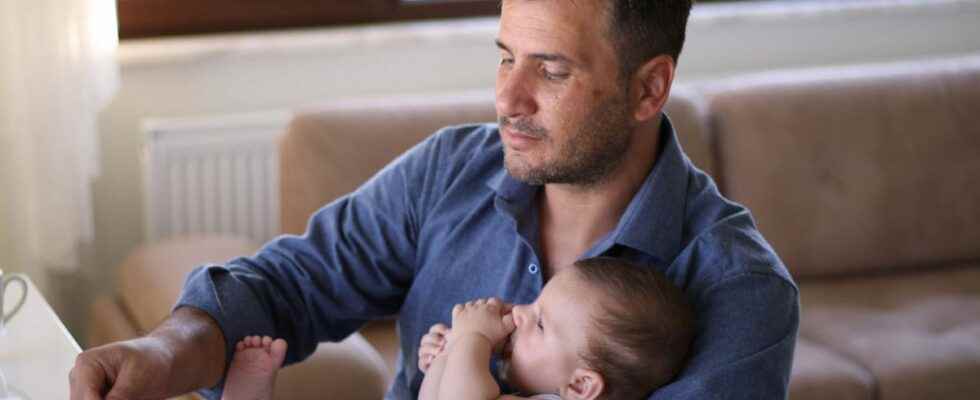Posted ,
Reading 2 mins.
A recent survey by the Center for Studies and Research on Qualifications (Cereq) reveals that paternity leave would not guarantee a better distribution of household and parental tasks.
Paternity leave does not rhyme with involvement at home. This is revealed by a new study published by Le Cereq on the use of paternity leave among young people who became fathers between 2010 and 2017. Conducted by Alix Sponton, researcher at Sciences Po Paris and INED, the study concerns data prior to the reform of July 2021, which increases the leave to 28 days, instead of 14 previously.
Fathers who took leave only appear “slightly more involved in the distribution of parental tasks and some domestic tasks in 2017”. It is slightly more common for the father to take care of the shopping or take care of the children, with +7 and +8 percentage points respectively compared to fathers who did not take leave (25% and 24% of fathers on leave versus 18% and 16%). In contrast, “almost no difference is observable regarding housekeeping and meal preparation”.
Disparities according to socio-professional category
She recalls that international literature indicates that “the leaves most conducive to encouraging men to invest in parental and domestic tasks are those paid, reserved for fathers, lasting several months and used in part outside the mother’s leave”. The greater involvement of fathers who took leave “concerns first of all activities that are carried out outside the home and those most directly related to children”writes Alix Sponton.
The study also confirms the “great disparities” according to the professional situation of the fathers at the time of the birth, “the instability of employment and income“appearing as “a central factor of inequalities”. When they are on permanent contracts, the vast majority of fathers (87%) take at least partial paternity leave. Only a quarter (24%) of fathers who were jobseekers receiving benefits at the birth of their last child used all or part of the leave.
The use of leave is lower at both wage ends. It is 67% among the 20% of fathers with the lowest incomes (less than 1,400 euros per month), peaks among those whose income is between 2,500 and 2,899 euros (98%) and drops to 73% among 10% of the highest paid fathers (3,500 euros and more).
